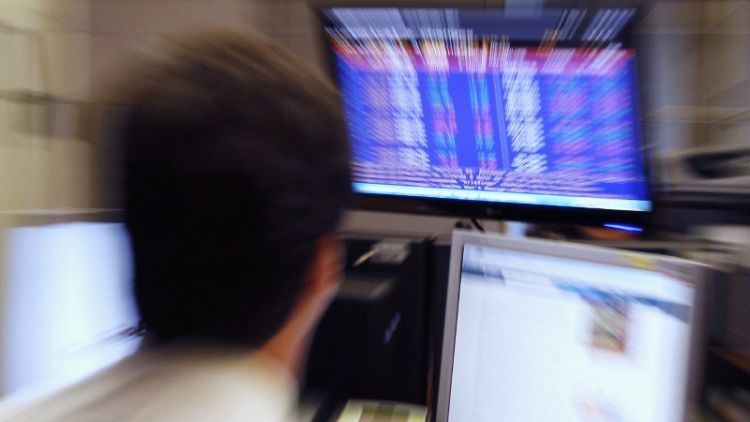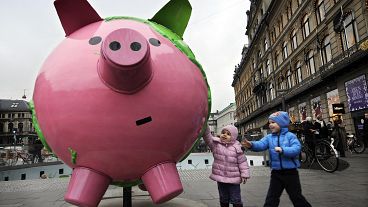By Helen Reid
LONDON (Reuters) - Six months after sweeping changes to the way European equity trading is regulated came into effect, a debate is raging among investors over whether the reform has succeeded in making market activity more transparent.
The European Union's Markets in Financial Instruments Directive, or MiFID II, was introduced in January with the aim of pushing more trading onto regulated public exchanges where prices and participants can be seen by all.
At first glance, it seems to have failed its biggest test. The share of trading on so-called lit exchanges -- where prices and trades are clearly visible -- has barely risen in the first months of the new regime.
Such lit exchanges, together with a few alternative trading venues, have a 50.85 percent share of European equity trading so far this year, versus a 50.28 percent average in 2017, according to data collected by brokerage Rosenblatt Securities.
But price swings in the lit exchanges have reduced, another aim of the rules implemented by the European Securities and Markets Authority (ESMA). And trading volumes have fallen significantly in dark pools -- non-transparent venues where trades did not contribute to price formation.
Dark pool caps were first introduced in March, and apply to more than 900 stocks, the majority of European and FTSE100 components.
The outcomes have divided opinion.
"There's a risk of over-simplification that lit trading is good, dark trading bad. It really depends on what order you have and what you need to do to deliver value to the end investor," said Rebecca Healey, head of EMEA market structure and strategy at dark pool operator Liquidnet.
Many participants argue that less transparent strategies offer a helpful service for large investors who want to avoid prices moving against them when executing big trades. For this reason, large blocks of shares are exempt from the caps.
Accordingly, the average "dark" trade size has almost doubled, having risen in May to 23,190 euros from 12,488 euros in January. That is a sign investors are turning to non-transparent venues specifically for large trades.
"Dark is really meaning what the regulators intended it for: a larger trade size compared to the lit," said Anish Puaar, a market structure analyst at Rosenblatt.
The rules will be tested in September when the first caps expire. If the regulator's model works, investors will stick to their new trading habits. But a snap back to dark trading should lead to the limits being re-imposed.
Dark block trading surges after MiFID II: https://reut.rs/2KtyiHO
AUCTIONS UNDER FIRE
The fact remains though, that trading on lit exchanges has not increased. So where has it gone?
There is evidence some is happening via periodic auctions -- closed intra-day auctions on exchanges where volumes have tripled since the dark caps came into force in March.
But because these auctions effectively mimic dark trading by hiding bids and offers from wider markets, some investors have dubbed them pseudo-dark pool trades.
ESMA head Steven Maijoor told the Federation of European Stock Exchanges last week that periodic auctions had "caught the attention" of regulators. The exchanges argue they simply offer an alternative trading method to prevent share prices moving against big investors.
"The most important thing is that customers really like it," Mark Hemsley, president of CBOE Europe and CEO at BATS Europe, said. "What they're finding is when they actually execute in the auction it has a very low price impact in the market."
CBOE's periodic auction platform has beaten expectations, with daily turnover now above $1 billion, Hemsley said.
Britain's regulator, the FCA, noted this week the auctions derived flows from uncapped stocks as well as capped, which suggests they are not an alternative to dark trading but a new type of strategy altogether.
But despite stellar growth, such auctions still account for just one percent of overall turnover, according to Reuters Market Share Reporter.
Dark and OTC volumes fall: https://reut.rs/2tz0xid
SYSTEMATIC INTERNALISERS UNDER SCRUTINY
Bank-run trading venues called systematic internalisers (SI) are grabbing a more significant share of trading flow, representing a quarter of overall European turnover, according to Market Share Reporter and other data providers.
MiFID II discontinued private trading networks run by banks, forcing them to re-register these services as SIs that can only execute trades against their own book and must provide public price quotes for trades up to "standard market size".
They stop short of full transparency, however.
"You can argue that around 30 percent of cash equity trading in Europe is bilateral against bank balance sheets -- they are dark, they are selective, they are not multilateral," said Lauri Rosendahl, president of Nasdaq Nordics, which runs Scandinavian exchanges.
"If regulators are trying to take pride in that cash equity trading is increasing on lit order books and that would be a MiFID 2 consequence, that's funny to the point of being absurd."
UBS exchanges analyst Michael Werner argued that high SI volumes may be down to double-counting, where both counterparties report a trade, adding: "I don't buy the data."
MiFID rules stipulate SIs must report detailed figures on transactions, including costs. These are due on June 30 and could clear up the muddy picture.
Rosenblatt's Puaar also wants SIs to voluntarily disclose trading data but so far only high-frequency trading platform Jane Street has reported figures.
BCN and SI market share: https://reut.rs/2IvXfAP
All this feeds the view held by many that multiple trading venues with different criteria are unnecessarily fragmenting and complicating equity markets. But this may simply be the mark of a more competitive market, says CBOE's Hemsley.
"If you look at markets' development with MiFID I and II, a lot of the innovation has come from the competing venues that have come on board," he said.
(Reporting by Helen Reid, Editing by Sujata Rao and Catherine Evans)



